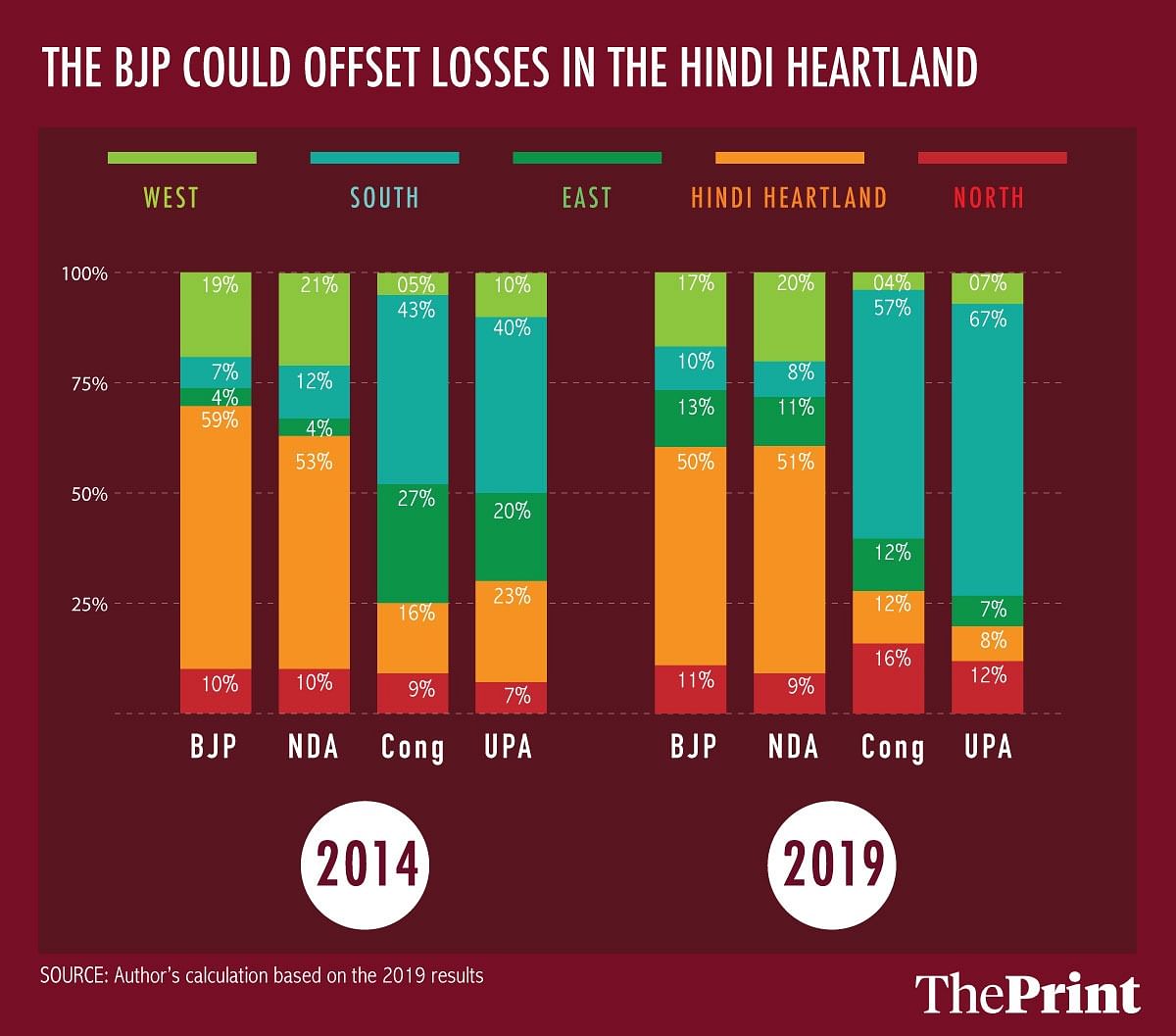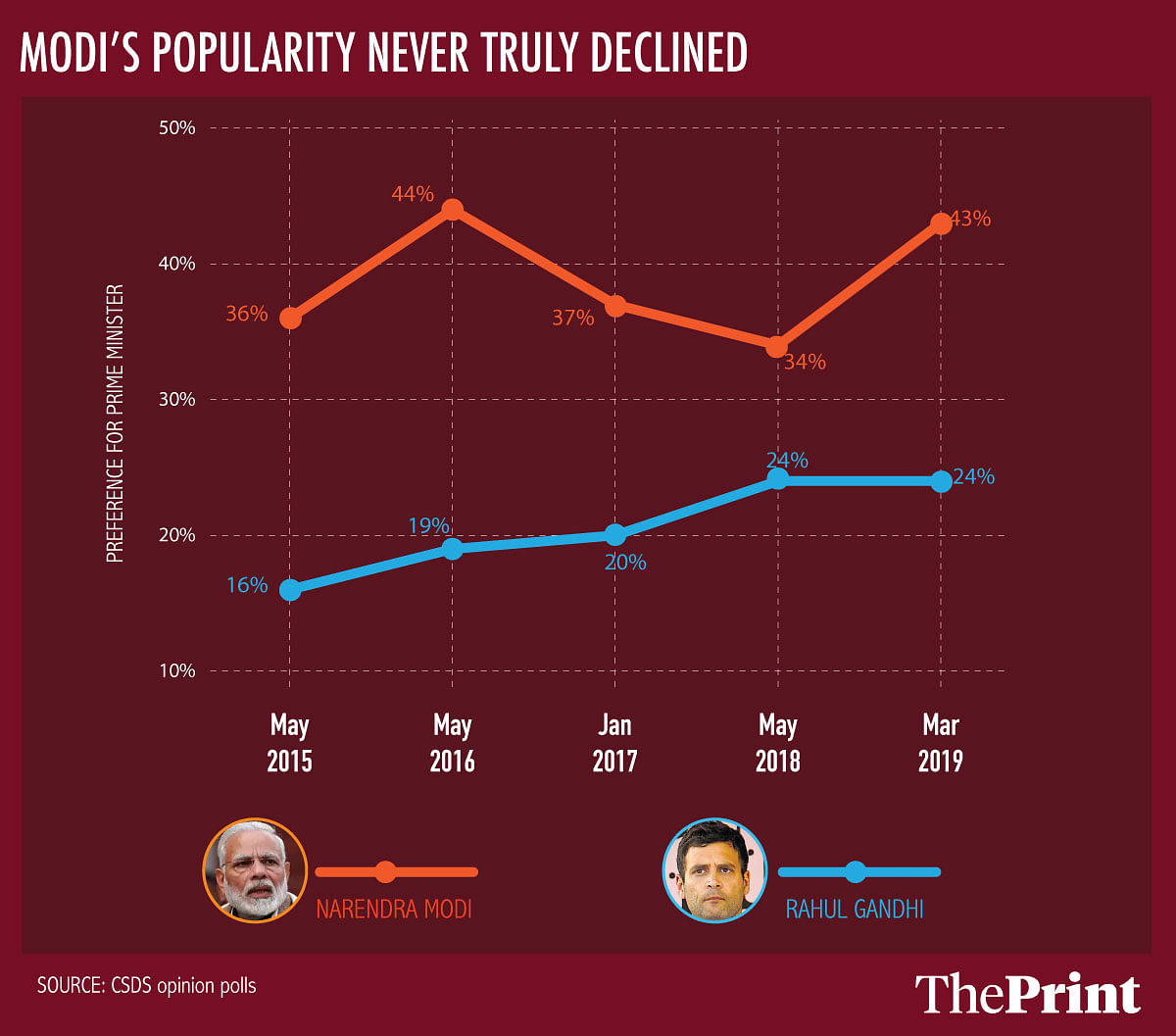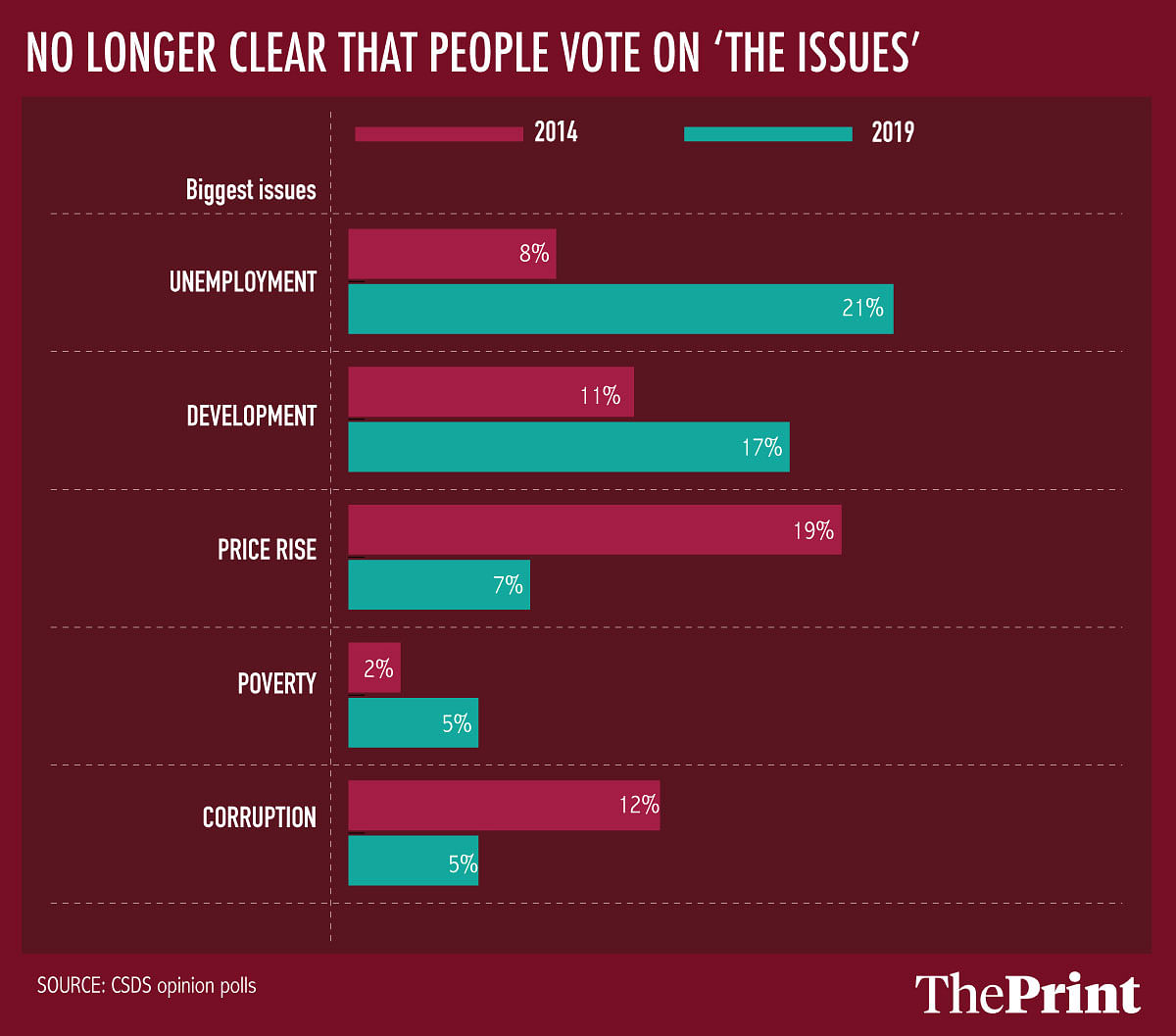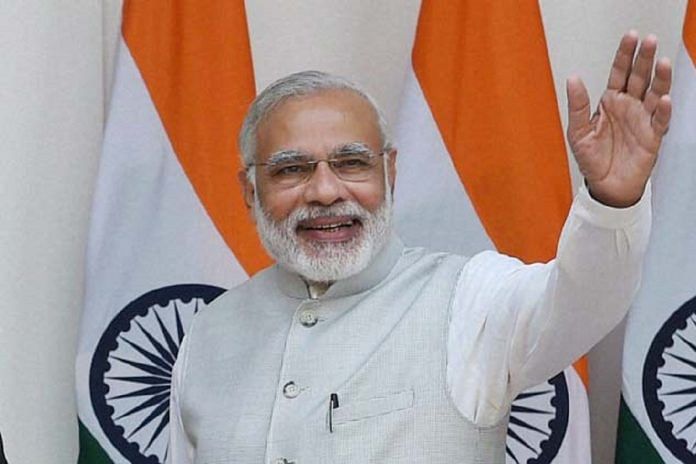In their attempts to make sense of the 2019 verdict, analysts reach for analogies; is this Lok Sabha election more like 1977 or 1980 or 1984? But to me, this election is like 2014 Part 2 — the issues that animated that election, and the motivations of voters have not, it would seem, changed between the two elections. The changes that have emerged in the aggregate picture are mainly from — with a few exceptions — realignments in state politics, but no great change in the strategies of the two Grand Old Parties.
If we divide the country into five broad regions – north, Hindi heartland, east, south and west – we find that the BJP-led National Democratic Alliance (NDA) got over ten percentage points fewer seats from the Hindi heartland in 2019 than the last time, but it made up for those losses from the east, while the rest of the regions remained the same. The gains for Congress-led United Progressive Alliance (UPA) came almost entirely in the south, as it became practically non-existent in the west and east.

For the BJP alone, the biggest changes in its fortunes came from the following states: a gain of 16 seats in West Bengal, 8 in Karnataka, and 6 in Odisha; and losses of 9 seats in Uttar Pradesh, and 5 in Bihar. For the NDA, the loss of the Telugu Desam Party (TDP) in Andhra Pradesh was neatly made up by the gain of the Janata Dal (United) as an ally in Bihar. In the big picture on the whole, not much changed.
For the Congress alone, the loss of 8 seats in Karnataka was made up with the gains of 5 seats in Punjab, 7 in Kerala, and 8 in Tamil Nadu thanks to a winning ally. The major difference in the UPA’s tally came from Tamil Nadu, where the Congress’ alliance partners added 29 seats, or almost the entire improvement in the alliance’s total (91 seats).
For both the NDA and the UPA, the major changes have come from realignments in state politics. Sensing the march that Jaganmohan Reddy’s YSR Congress had stolen over him on the issue of granting special status to Andhra Pradesh, Chandrababu Naidu had to pull the TDP out of the ruling alliance. But for the NDA’s prospects, that change became moot given the YSRCP’s clean sweep (22 out of 25 seats). The disintegration of the AIADMK after the death of its leader J Jayalalithaa propelled the DMK wave across Tamil Nadu, taking the Congress along with it.
Also read: 12 reasons why Modi-Shah’s BJP got the better of Congress & everyone else
In a few states, however, the BJP’s gains are of its own doing alone; chief among these is West Bengal, where, with no alliance partner and no change in the state’s intra-party politics, the BJP was able to come within striking distance of first position (winning 18 seats as against the ruling TMC’s 22).
Much of this should not come as a surprise. The issues on voters’ minds, and their beliefs in the abilities of their leaders, have not changed in any significant way between the 2014 and the 2019 elections. Prime Minister Narendra Modi’s personal popularity, which flagged in May 2018, rose before the elections to a higher level than what it was in 2014; and while Congress president Rahul Gandhi’s popularity also rose, the gap between the two remained constant, data from opinion polls conducted by the Centre for the Study of Developing Societies (CSDS) shows.

This partly explains why any attempts at parsing the “real issues” before voters fails. Undoubtedly, unemployment became a significant issue in the minds of voters, while “price rise” and “corruption” receded somewhat with the UPA, CSDS data shows. The “Balakot bump” that the Pulwama attacks and subsequent air strikes gave to the issue of national security faded quite comprehensively, meaning that the key issues before voters were once again from the usual bouquet of economic issues, data from CVoter’s daily tracking poll shows.

Yet, voters consistently chose the NDA over the UPA as being the best placed option to solve the biggest issues of the day, data from CVoter’s daily tracking poll, seen between January 1 and May 15 this year, shows. And this could be where the tail wags the dog, and where conventional analyses of the motivations of voters break down.
Despite evidence of rural distress and widespread unemployment, as well as slowing macro-economic indicators in the last year, voters consistently reported the economy as being in good shape, CSDS data shows. BJP voters were even more likely to rate the economy well, and we now know that it isn’t just the rich who vote for the BJP.
Also read: BJP’s polarisation strategy pays off as party wins 37% seats with high Muslim population
Indian voters are deeply ideological, a new book by political scientists Pradeep Chhibber and Rahul Verma has shown. They are also ever more swayed by the PM candidate, and more likely to make up their minds about whom to vote for early on.
If unemployment was their top concern in 2014, it certainly did not get better between 2014 and 2019. What appears most likely is that voters’ feelings about the BJP and Narendra Modi, and the Congress and Rahul Gandhi — sentiments that are less transactional than “who will get me a job” — have not really changed between 2014 and 2019, and neither, significantly has the result. Analysts might look into history to understand 2019, but the answer could be that the needle has simply not moved.
The author is a Chennai-based data journalist. Views are personal.



